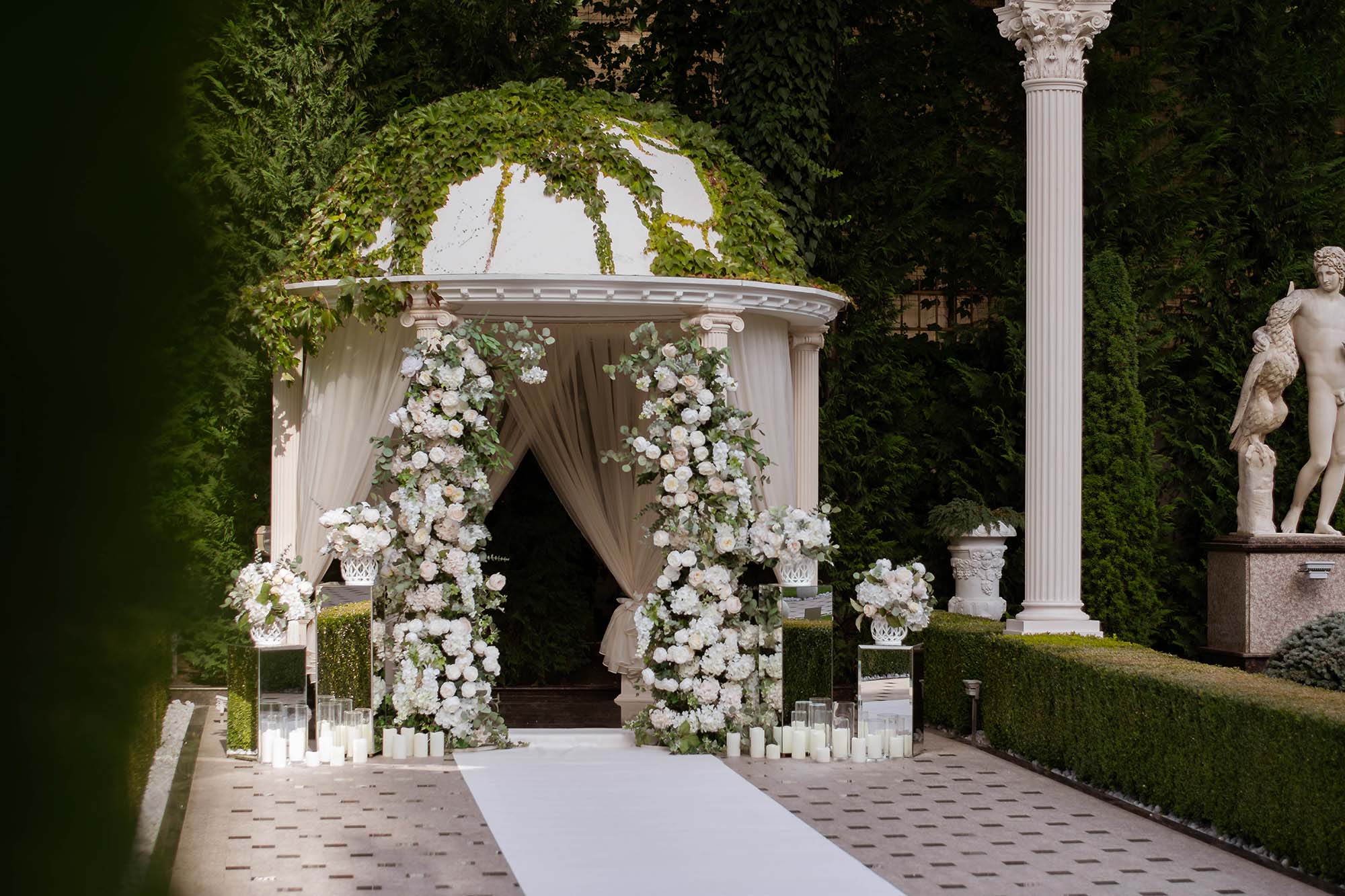
Your rabbi sends the halachic parameters. Your mother sends her fourteenth chuppah photo from Instagram. They all look identical: white canopy, white flowers, outdoor backyard, string lights.
What is happening here is that you see others’ resolutions instead of discovering a solution yourself.
94% of the Jewish couples consider the chuppah most photographed at the ceremony. But 78% struggle finding it personally meaningful in more than “pretty.”
You can do better.
A chuppah is your future home. It stands on the sides open as the Tent of Abraham was open—you receive guests in it. Heaven brings both heavenly presence and earthly shelter. The Talmud states heaven creates a special chuppah for the couple.
It is not decoration; it is architecture for a transcendent moment.
List out the non-negotiables of your:
Note these. Everything else can be negotiated.
Answer the following questions before choosing any material:
Take notes. Flip through old family photographs. Discuss the wedding lives of your grandparents.
Each design aspect has to consider: Would your grandmother see this and say it was Jewish? Would your future grandchild relate to it? Would someone else recognize this symbolizes YOUR story?
✅ Materials related to the true family background
✅ Unique symbolism from your Judaism
✅ Interpretations in craftsmanship about your roots
✅ Items for the ritual only, not for the photos
Look at your family photos from weddings for design tradition. Talk with the rabbi about the people-oriented traditions. Visit local craftsmen who work with real materials.
Commission the structural elements in your chuppah. Source fabrics that bond your culture and location. Create lighting that accommodates the time of your ceremony.
Create a scale model for presentation to your rabbi. Test assembly for your venue constraints. Collaborate with musicians for processional acoustics.
Full practice involving all ritual participants. Photo under various conditions of lighting. Set up explanation cards for non-Jewish guests.
Your chuppah will shelter the most valuable moment of your life. Yours should reveal your genuine story, not someone else’s sense of style.
By combining the halachic requirements and the background of your family, you are left with something both truly Jewish and distinctly yours.
Prioritize meaning over trends. Your wedding is too precious for a Pinterest copy.



